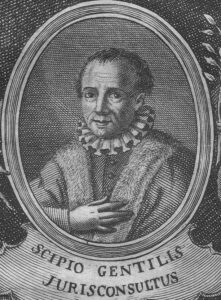Matteo Gentili was born in 1517 from Lucentino (or Gregorio, according to the registration number of the University of Pisa). Introduced to the field of medicine as his paternal grandfather, he attended the University of Perugia and Pisa, obtaining the doctoral degree on 13 May 1549, assets defined medicine and philosophy, in the presence of numerous prominent figures of the time, like Simone Porzio. Returned to San Ginesio, the following year he married Lucrezia Petrelli, daughter of Captain Diodoro Petrelli and sister of Niccolò Petrelli, castellan of Trieste in the service of Archduke Ferdinand II, with whom he had seven children. The most famous are Alberico, the firstborn, and Scipio, the penultimate. Assumed as citizen doctor In the 1552, In the 1558 went on a mission to Tolentino on the orders of the city government, to then undertake the profession of doctor in the town until 1562. During the civil strife that took place in San Ginesio, Matteo tried to intervene to try to overcome local conflicts, but the failure he obtained caused him a negative judgment on the part of the Sanginesina population. In 1566 it is found at Borgo San Sepolcro, where he practices his profession until October 1571, when the city council of Ascoli Piceno appointed him a doctor in place of his brother Pancras, died a few months earlier. Returned to San Ginesio in 1573, he dealt with city politics and became prior of the Brotherhood of the Most Holy Thomas and Barnabas.
After the first negative opinions emerged about the members of the fraternity, In the 1579 the complaints to the inquisitorial court and some arrests pushed him to get away from San Ginesio, in the company of Alberico, to avoid trial and jail. The escape route was oriented towards Ljubljana, with a transit to Trieste, where the fugitives could count on the protection of Niccolò Petrelli, who recommended them to the baron Khisl von Kaltenbrunn. On 27 August 1579, Matteo obtained the appointment as protomedico del Duchy of Carniola, role he held only for a few months, due to the proclamation of the edict of Rodolfo d'Asburgo, which provided for the practice of the Catholic confession only and the expulsion of those suspected of Protestant beliefs. In 1580 was forced to take refuge in England, precisely London, where he acquired a certain role in the Italian Church of London, to then join his son Alberico ad Oxford. Matteo died in 1602, after becoming seriously ill in 1581. He came buried on 26 February in the St. Helena's Church in Bishopsgate.


